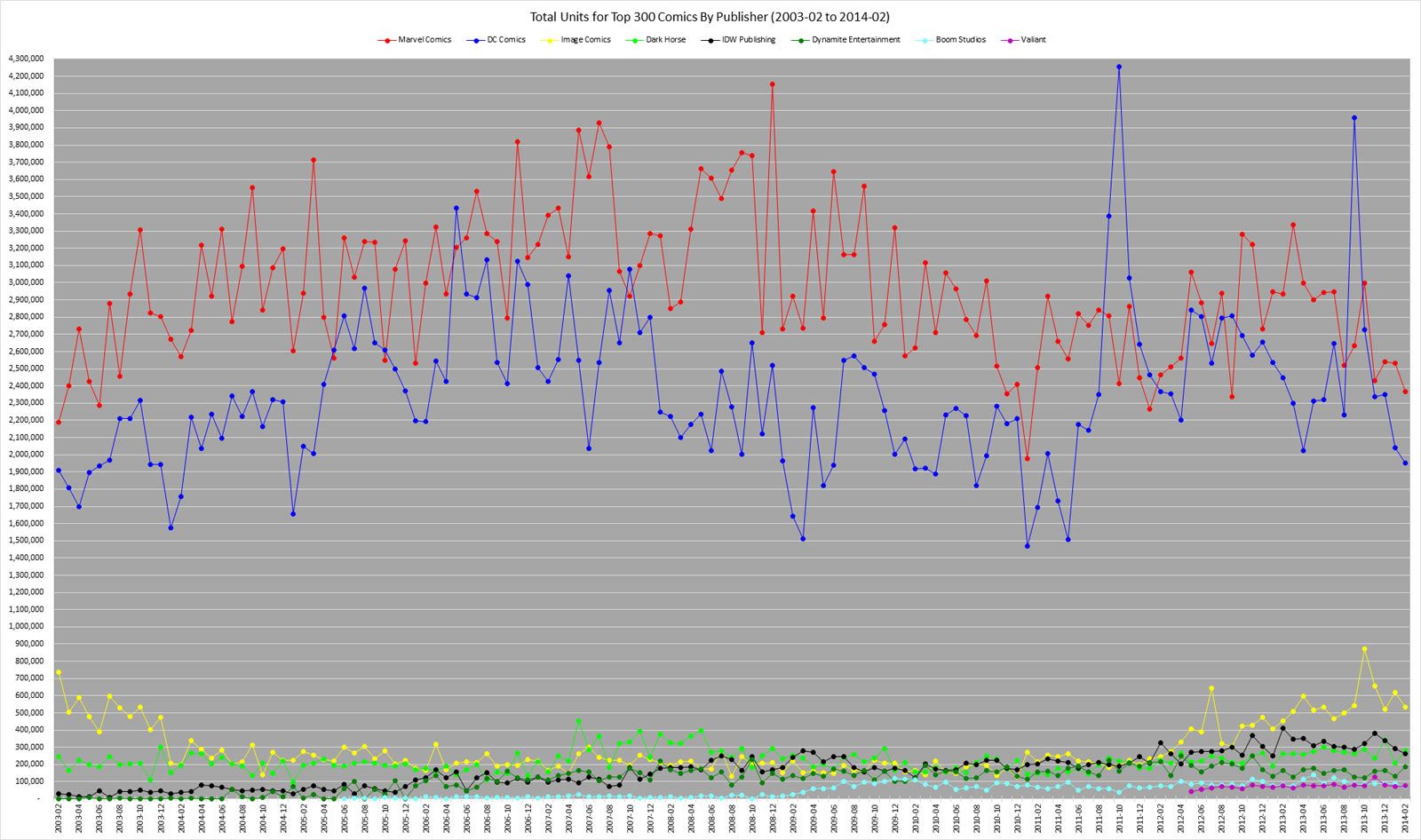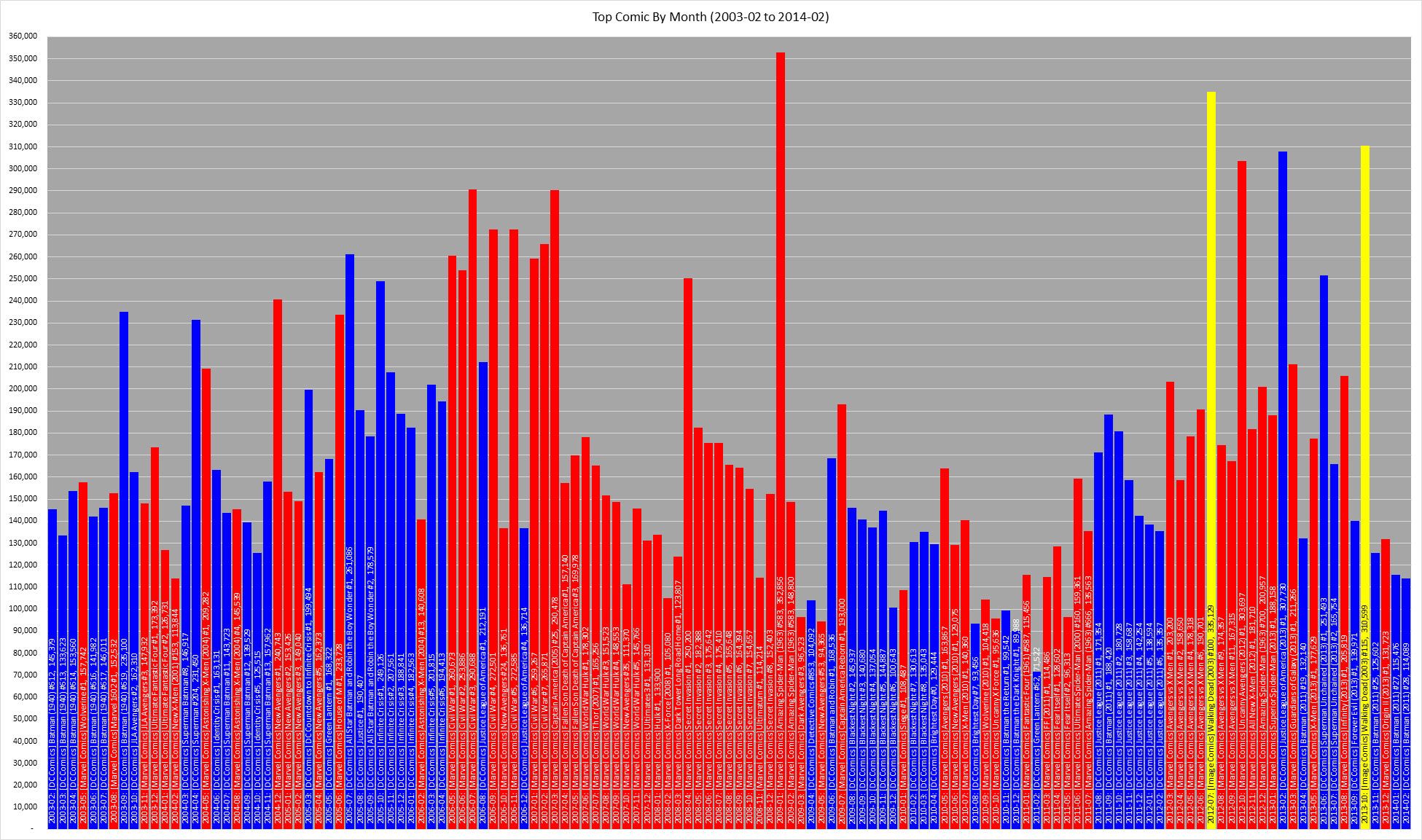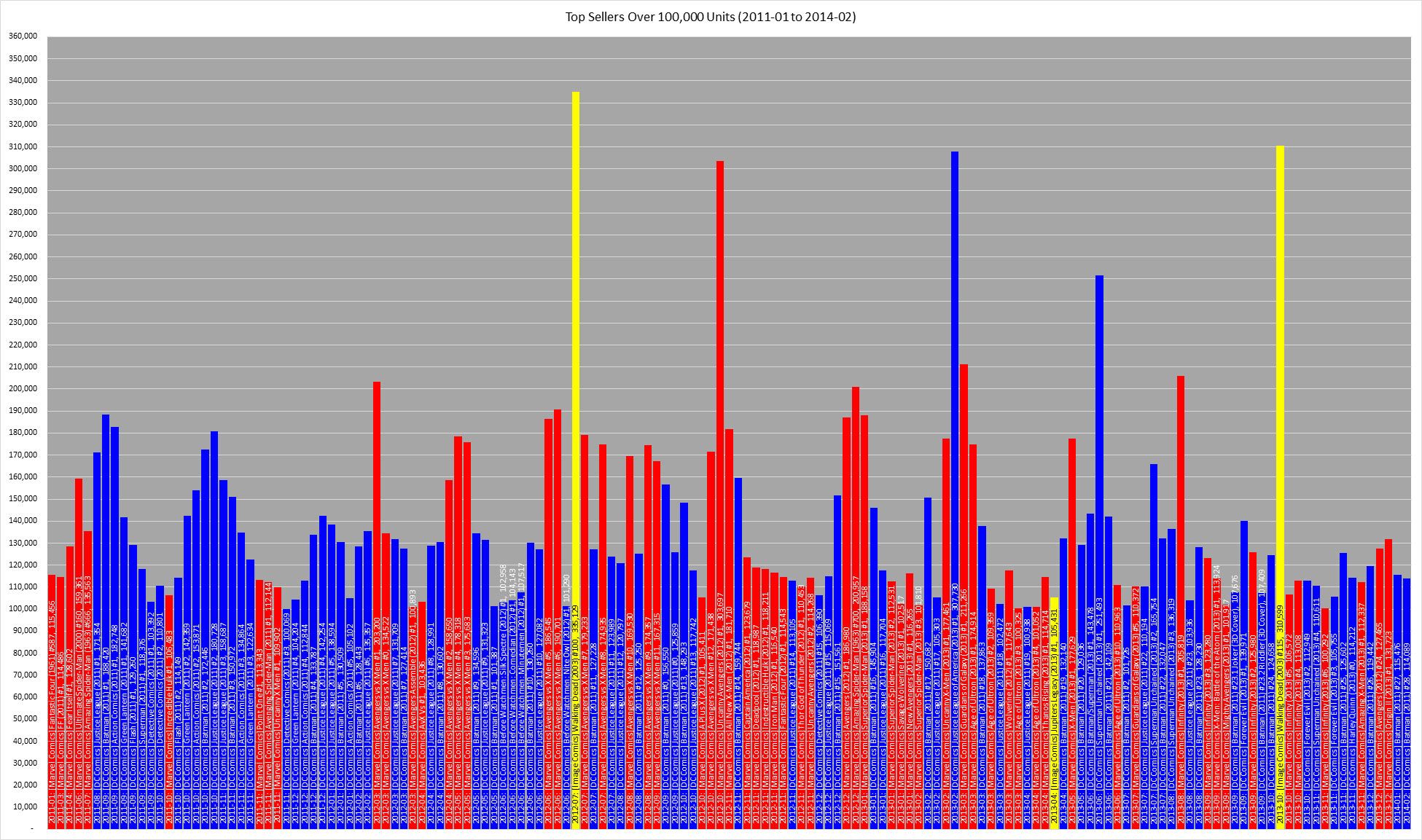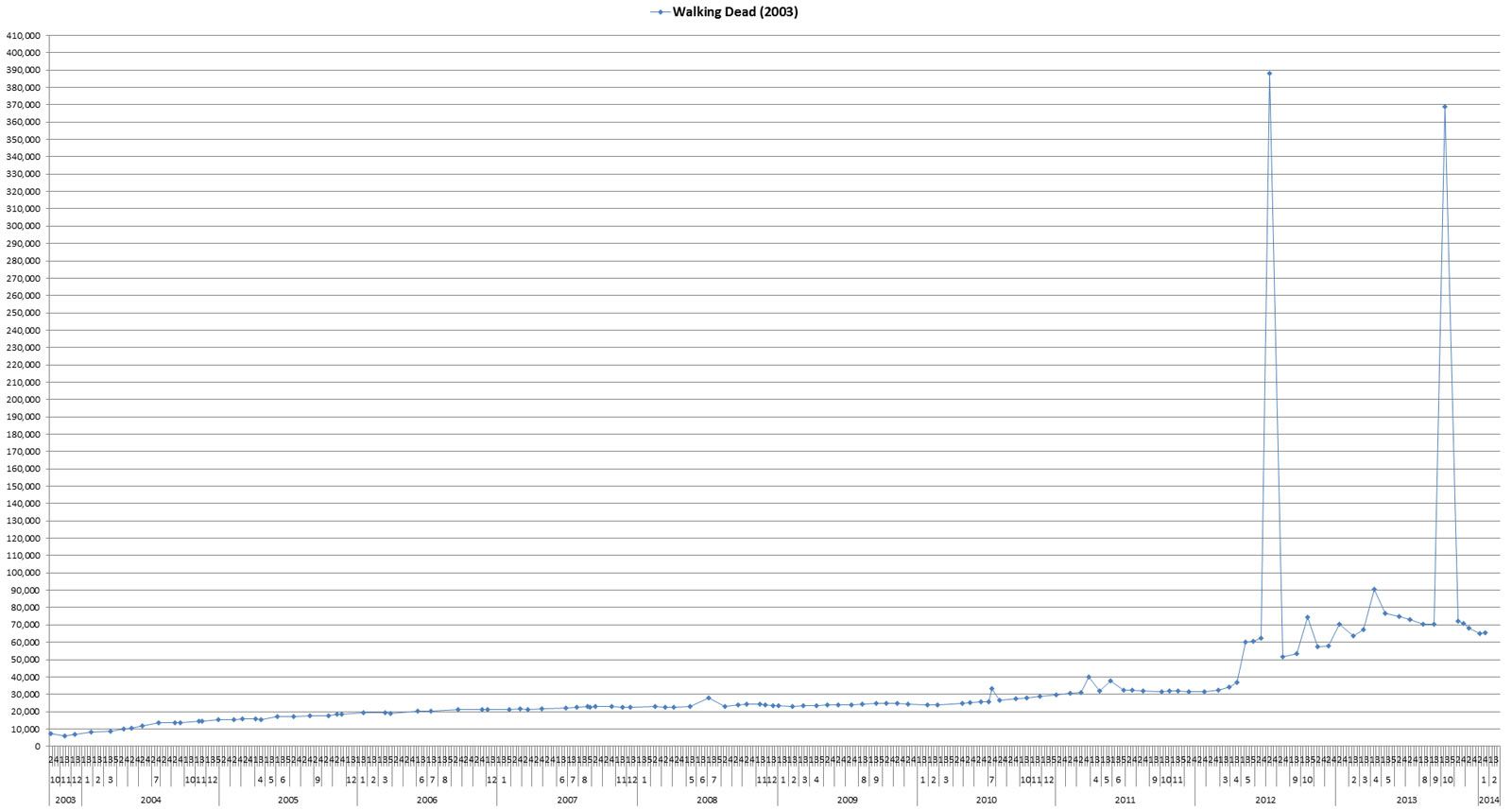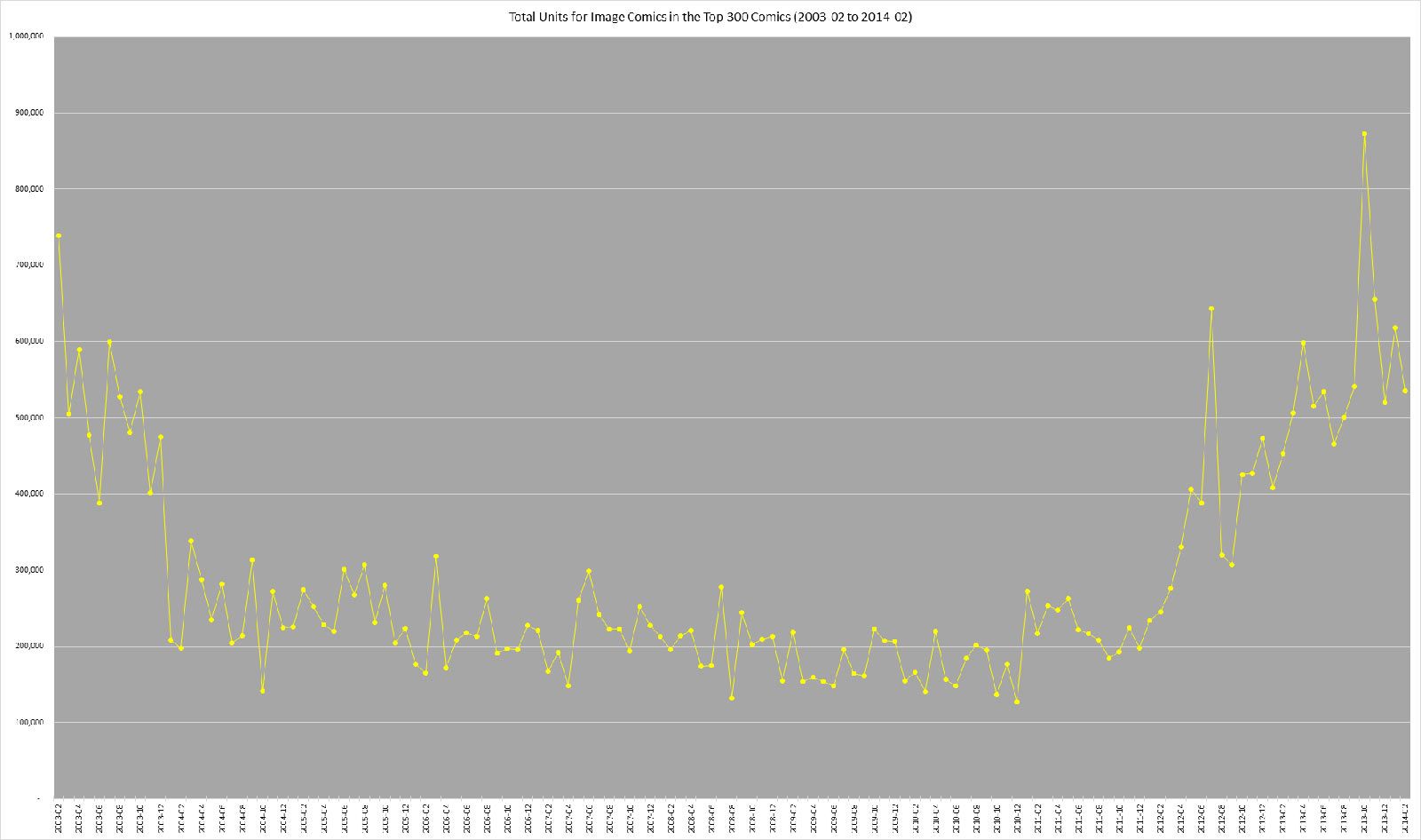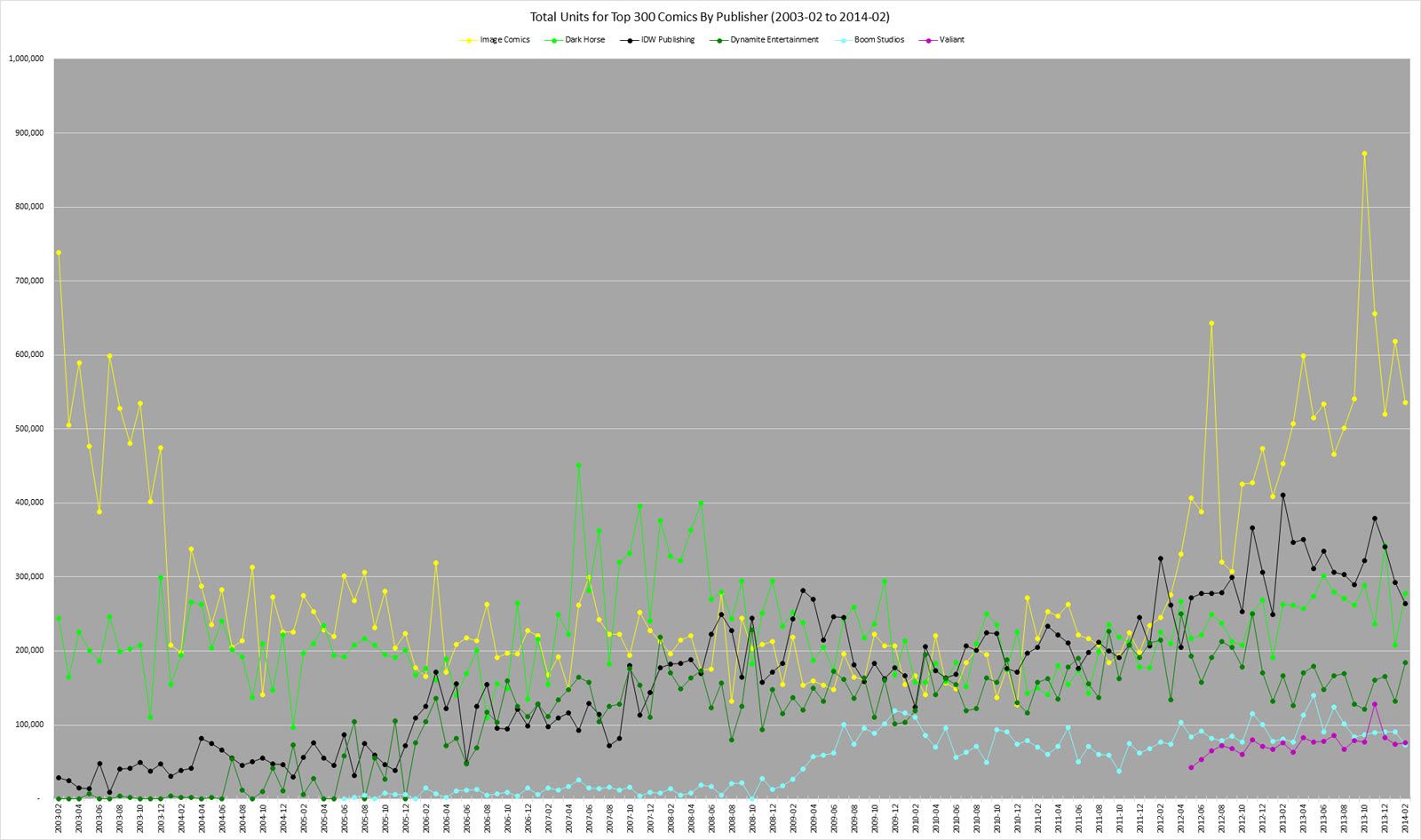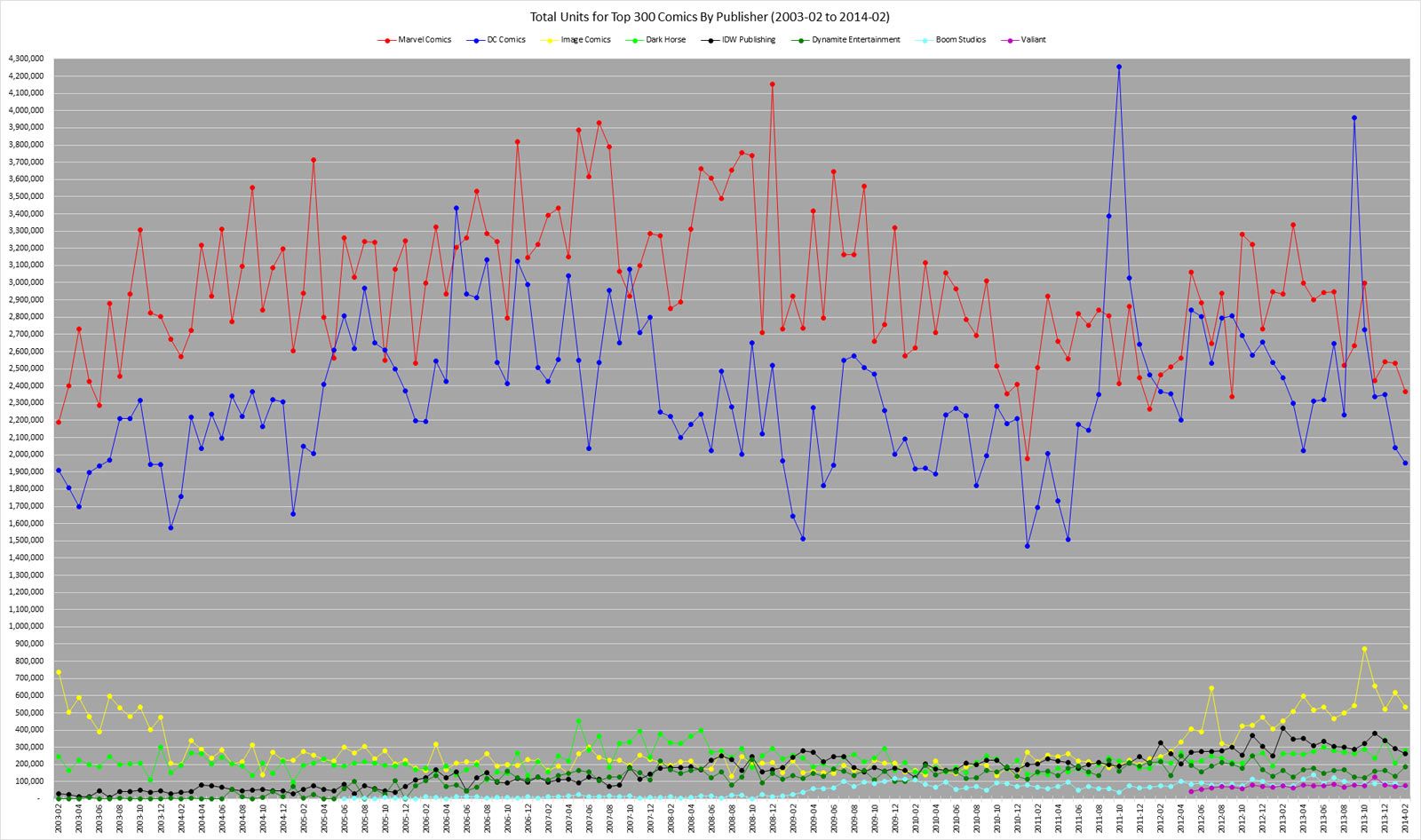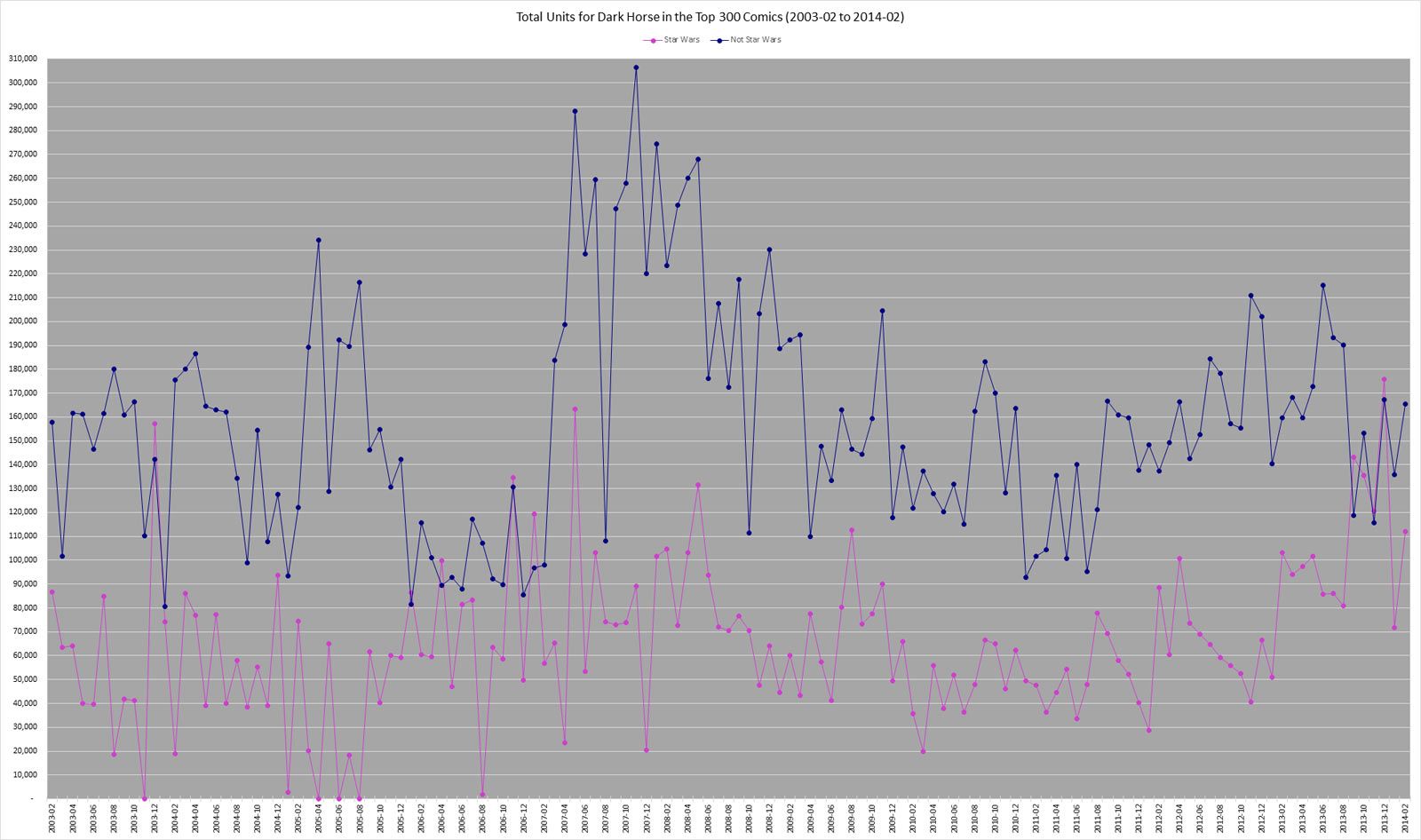The only comic to sell over 100,000 units in February 2014 was "Batman" #28 with 114,089 units. There have only been eight months in which no comic exceeded 100,000 unit in sales. The lowest number of units for a top selling comic in any given month was "Green Lantern" #62 in February 2011 with a mere 71,522 units. Lackluster sales in February are not uncommon.
Looking at the top comic for each month over the final order era (which started in February 2003 when Diamond shifted from releasing pre-order information over to releasing information based on what was shipped and invoiced to retailers), we can see there was a period from the last quarter of 2006 through the first quarter of 2009 during which Marvel had a virtual lock on the top slot. One of the titles to turn that around for DC was "Blackest Night" which was the top seller every month it shipped. With the start of the New 52 in August 2011, we started to see monthly titles return as a regular thing at the top of the list, something not seen since the high profile "Hush" storyline in "Batman" back in 2003.
There is nothing magical about selling over 100,000 units but it generally makes for a dividing line with items above it clearly being strong sellers. If we take a look at the comics to sell over 100,000 units since the start of 2011, we see Marvel and DC unsurprisingly account for the majority of the items. Only three comics from Image have sold over 100,000 units: "The Walking Dead" #100 and #115 both of which had a number of incentive covers which drove up the sales and "Jupiter's Legacy" #1 in April 2013.
While "Jupiter's Legacy" has had some delays in release, "The Walking Dead" is nearing the end of a 12 issue arc with an accelerated release schedule. Due to the soft sales, "The Walking Dead" placed two issues in the top ten in February even though it was been declining slightly in sales over the past year. Even if it doesn't stay in the top ten over the next few months, it should be too much longer before it has strong enough sales every issue to place in the top ten every month moving forward.
Overall, Image has had growing sales over the last three years. New titles like "Saga," "East of West" and "Lazarus" have launched strong and have helped boost the overall sales of Image on the top comics list.
Putting that into the context of the other mid-tier publishers we can see IDW was giving Image a serious challenge over the course of 2008 through 2011.
And, finally, adding in Marvel and DC for the bigger context:
Both Marvel and DC have been seeing a downward trend over recent years. The New 52 was a game changer for DC in many respects. It re-engaged some lost readers and existing readers and seems to have turned off some long time readers as well. Meanwhile, Marvel seems to be ditching the concept of long term ongoing titles in favor of volume which run a year or two before relaunching.
The most recent "Wolverine" #1 sold around 88,923 units. The previous "Wolverine" #1 sold an estimated 117,669 units in March 2013 with the series dropping by around 51.41% on the second issue and continuing to drop from there. "Wolverine #2 (of this newest volume) also shipped in February selling an estimated 47,339 units, down 46.76% from the first issue. The most recent "Fantastic Four" #1 sold an estimated 65,775 units. The previous volume of launched around 114,543 units and dropped 49% to about 58,418 units on the second issue.
Shifting to shorter volumes with frequent relaunches isn't helping sales beyond the first issues. The practice runs the risk of training readers and retailers to consider first issues as the only jumping on points which can't possibly help long term sales. The initial bump in sales caused by the new first issue usually goes away quickly with the title returning to the sales level it was at before the relaunch. The best case scenario is a new high water mark for the title which is then slowly declines from until the next relaunch which resets the sales to a new high point from which it continues to deteriorate from.
Yes, there is a certain amount of standard attrition for ongoing titles. But there is nothing mandating it. A number of things can and should be done to combat the standard attrition and stabilize sales. To start with, every issue should be able to stand alone and have merits as a story. There should be a complete context within an issue leaving the reader feeling like they got something whole which plays into a large tapestry instead of feeling like they got a fragment of a complete story. Constantly declining sales are the root problem of comic book sales across the board. The first publisher to solve that problem will have a serious competitive advantage which will enable their marketing dollars to grow their business instead of just recouping lost sales.
"Avengers AI" #9 sold 16,906 units which is below "A Plus X" and "X-Men Legacy" both of which have since ended, explaining "Avengers AI" recent cancellation announcement. The only other Marvel title selling low enough to be at risk is "Superior Foes of Spider-Man" #8 which sold 19,193 units. It was below "Secret Avengers" #16 with an estimated 20,002 units for the final issue of that volume before it relaunched with a new first issue.
"Forever Evil" #5 sold 92,014 units to retailers, down about 7.38% from the previous issue. "Nightwing" #28 sold around 36,940 units making it the 11th best-selling comic for DC on the Diamond charts in February 2014. Interestingly, "Green Lantern" #28 sold an estimated 49,200 units which is only up about 376 units from the previous issue despite including "Red Lanterns" #28 as a flip book while maintaining the $2.99 cover price. Presumably most of the readers of "Red Lanterns" already read "Green Lantern." Since "Green Lantern" generally sells about twice the number of units as "Red Lanterns," there is the possibility of "Red Lanterns" #29 getting a bump in sales as a result of this promotion push. Frankly, I doubt we'll see much of an increase, which is a shame since this was a great attempt to introduce potential new readers to the title.
The New 52 titles with sales low enough to be at risk of cancellation include "Batwing," "All Star Western," "Larfleeze," "Superboy," "Trinity of Sin: Phantom Stranger," "Trinity of Sin: Pandora," "Birds of Prey" and "Swamp Thing." Even with counting weekly titles as four issues towards the total of 52 issues a month for the New 52 line up, there is room for five new titles.
With the Star Wars license leaving Dark Horse at the end of the year, I thought it would be interesting to take a quick look at how much that license impacts the sales of Dark Horse. Figuring everything for Star Wars has that in the title, here is how the sales for Dark Horse split between the Star Wars items and everything else:
Clearly, the Star Wars license is a big deal. But Dark Horse has a strong lineup outside of it and will no doubt do fine after the license moves over to Marvel. For all those who thought it the license going to Marvel was a done deal when Disney bought out Marvel, the Star Wars license could have gone elsewhere such as to Disney Comics. Another possibility was a period of no Star Wars comics such as happened to Uncle Scrooge after that license left Boom Studios.
If you'd like to listen to an in-depth discussion of the sales data, check out the Mayo Report episodes of the Comic Book Page podcast at www.ComicBookPage.com. As always, if you have any questions or comments, please feel free to email me at John.Mayo@ComicBookResources.com.

